Posture Matters For Fly Casting
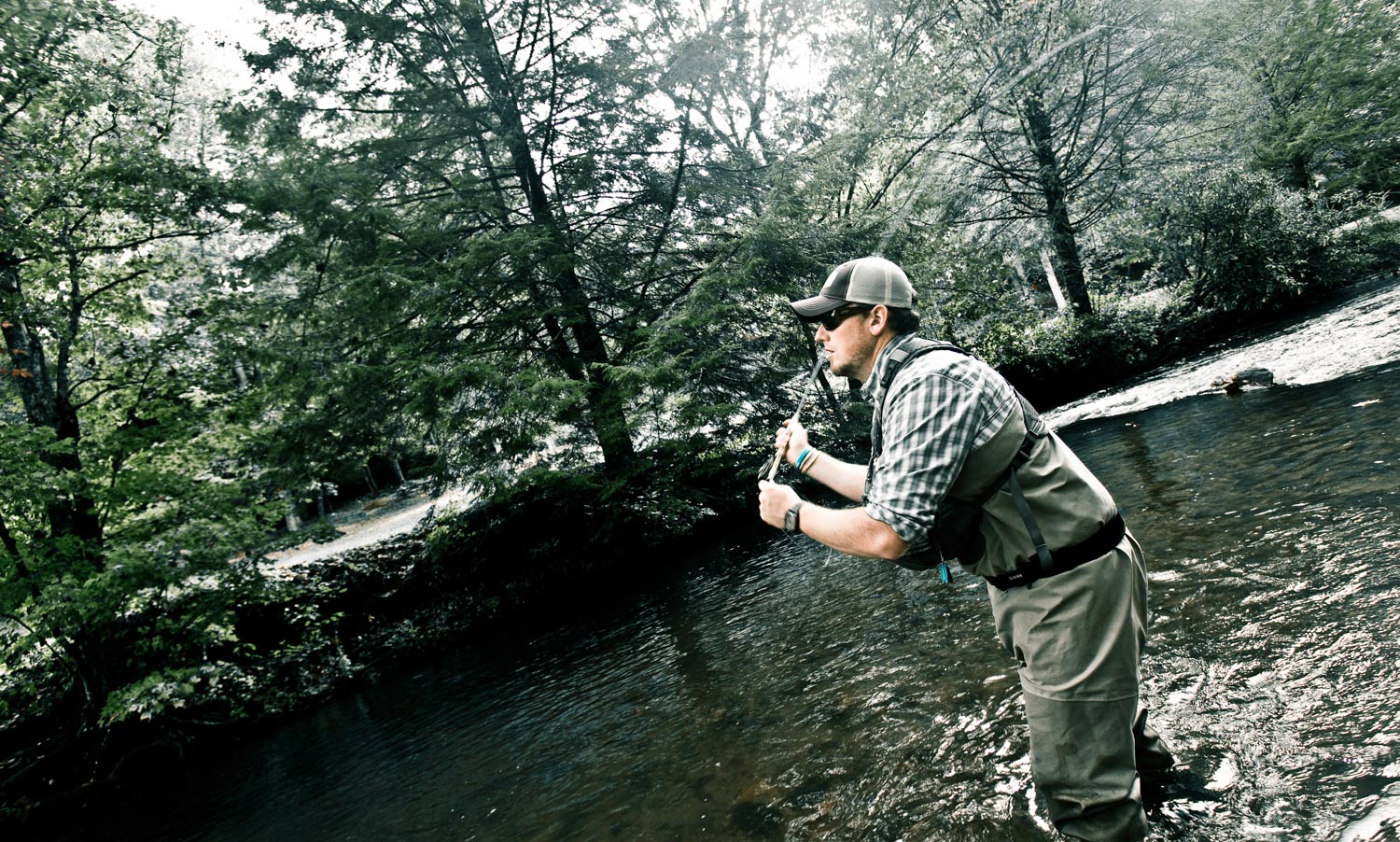
How many times did your mother tell you to stand up straight?
Well, I’m guessing she wasn’t a casting instructor. Almost every time I work with anglers on their casting, we end up talking about posture. I realize that fishing is a leisure activity, but fly fishing at least, is also an athletic activity and like anything athletic, posture matters. Better posture means better casting and that means catching more fish.
Here are a few basic tips for fly casting posture.
By far the most common problem I see in folks struggling with their casting starts with their knees. If you’ve ever stood up in a wedding, you’ve likely gotten the advice from the preacher about locking your knees. It’s apparently not uncommon for folks who lock their knees during a long ceremony to keel over like a drunk.
It makes sense; you have no real balance or control over your body when your knees are locked straight, but I can’t tell you how many folks I see trying to cast a fly rod stiff-legged. Even after I point it out, everyone is resistant to bending their knees when casting. I think they just feel silly, but would you feel silly bending your knees to hit a golf ball, or a baseball? What about throwing a pitch or shooting a basket? Would you take a shot at a big buck with your knees locked? Of course not. I can’t think of any sport you’d approach with you knees locked straight. Don’t try to cast that way either.
Bending your knees gives you solid balance and engages the powerful muscles in your core. This will give you better control of the rod and line, and add power to your cast. Having a firm stance is a huge help in making the all-important hard stop in the casting stroke.
This is never more important than when
Read More »Good Indications
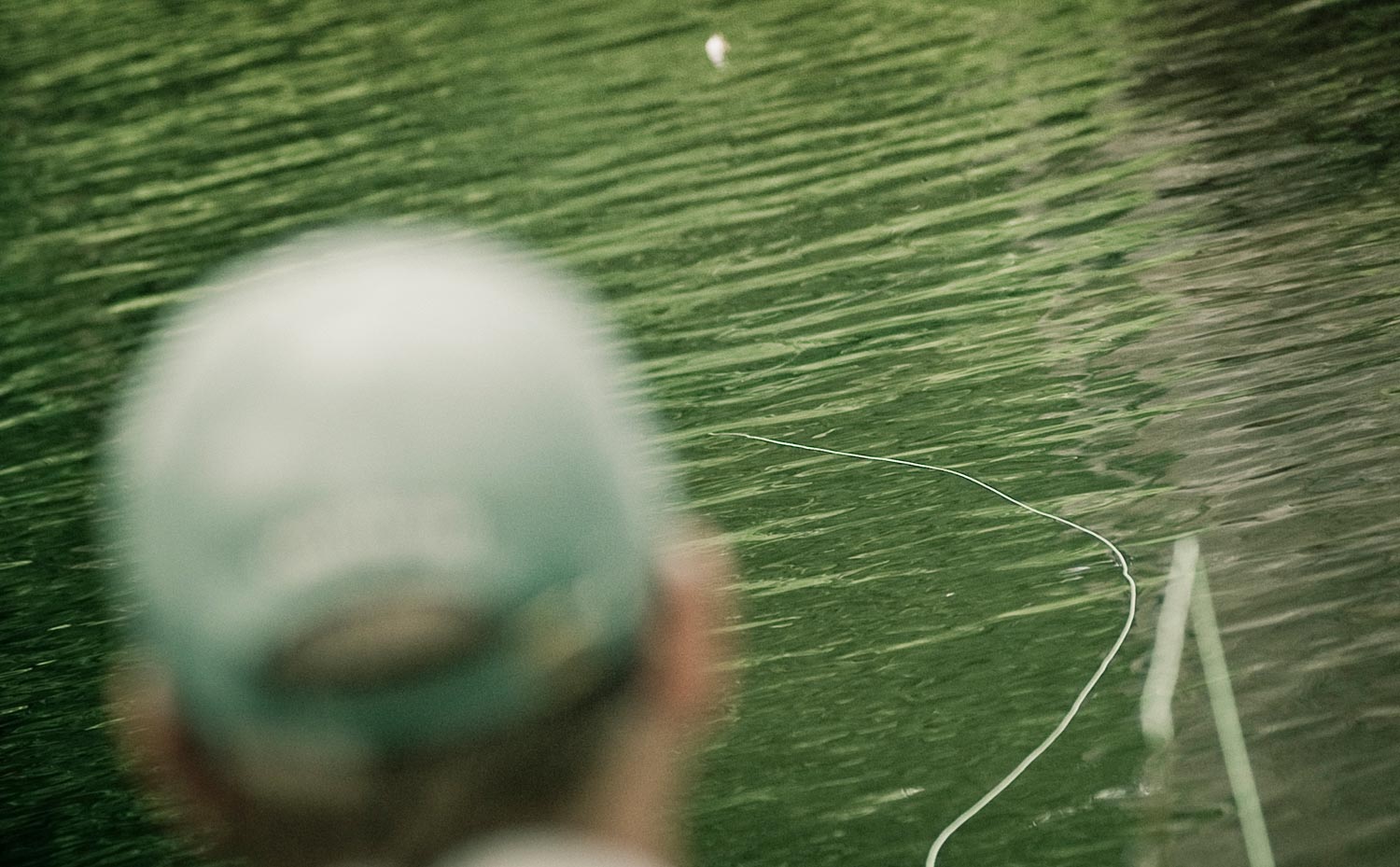
I VAGUELY REMEMBER THE DAYS BEFORE STRIKE INDICATORS.
I don’t know for sure when the first fly fisherman looked over at a bait fisherman using a bobber and decided that he couldn’t beat ‘um and it was time to join ‘um, but I do remember when I first discovered strike indicators. I was fishing nymphs with greater and greater regularity. I was catching a lot more fish but far from what I’d call proficient. A friend gave me a yarn indicator and promised I’d catch a lot more fish. He was right.
It wasn’t long before I found myself using the indicator every time I tied on a nymph. It worked so well I couldn’t see fishing without it. It was such a revolution that I figured there had to be something more. I went on a quest for the perfect strike indicator. That sublime doohickey that could put on my line that would make me a nymphing god.
I started with yarn and at first I wasn’t aware that there was anything else. I experimented with colors and sizes. Yellow, pink, chartreuse, white, black, each had its application but I never found anything I liked better than the yellow one my friend had given me. Fish liked it too. It got eaten routinely so I tied a hook into it. I caught a few fish but mostly I hooked my fingers while adjusting the indicator.
Next came foam. I tried emulating the yarn indicator with strips of foam bound together, thinking it would not get waterlogged like the yarn. It didn’t but it cast like an umbrella. Then I discovered stick-on foam indicators and they worked OK but they didn’t float very high. I eventually lost interest in foam and went back to yarn.
I tried a new style of yarn indicator with a tiny O-ring used to attach it to the line. It was an interesting idea. It was easier to attach but the O-ring always broke before long and it was tougher on the leader.
Then putty indicators came along. I couldn’t resist this idea. It was great to be able to choose the size of my indicator for the fishing conditions. To add or pinch off some putty to get just the right size. I even bought glow-in-the-dark putty which I am embarrassed to say I never used. Putty didn’t do it for me either and it left a sticky mess on my leaders and everything else it touched.
Next I went through a stealth phase.
Read More »It’s The Little Things
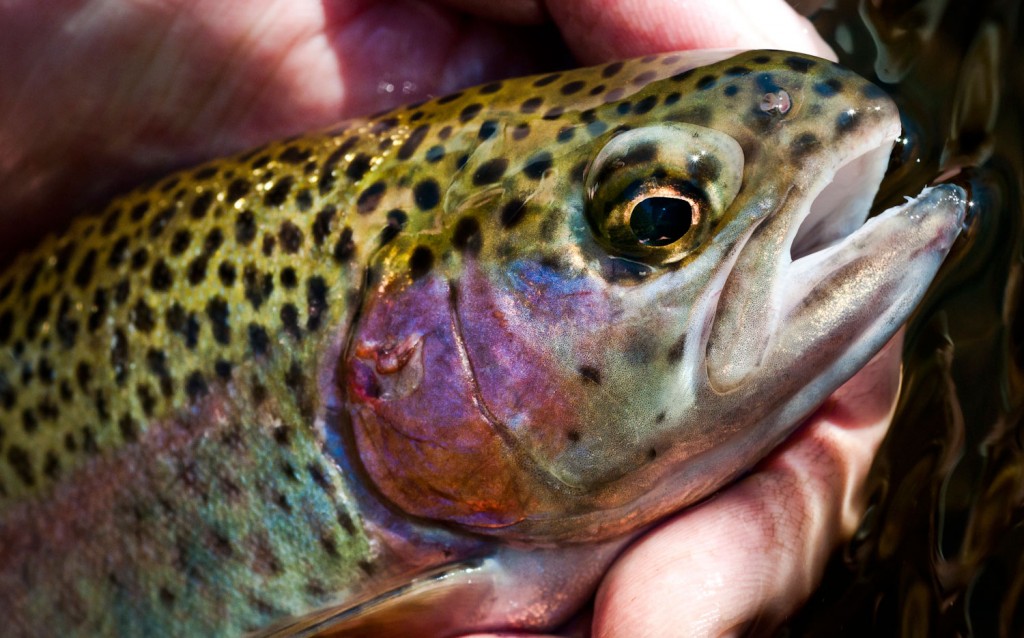
“I know it when I see it!”
Kent and I were doing a presentation at a fly shop the other day and after showing a couple of hundred fishing photos, during the Q&A part of the program, a fellow raised his hand and asked “do you guys catch any small fish?”
I guess I’m as guilty as anyone for perpetuating the idea that size is all that matters in fishing. I sure don’t feel like that’s true but when you look through my photos you, sort of, start to get that feeling. It’s easy to go too far the other direction too and get all moist and sloppy about tiny wild fish. I really do love tiny wild fish but that’s not all there is to me either. I just want to catch a great fish.
I guess I’ll define a great fish this way. When asked how he would define pornography Sen. Jessie Helms replied, “I know it when I see it!” I guess that goes for fish porn too.
The average size fish in the stream where this little guy was caught is around eighteen inches and I caught plenty of those fish the day this photo was taken, but this beautiful little guy that my buddy Dan landed is the one I’m going to show you. In my opinion he was
Read More »Never Give Up on a Bonefish
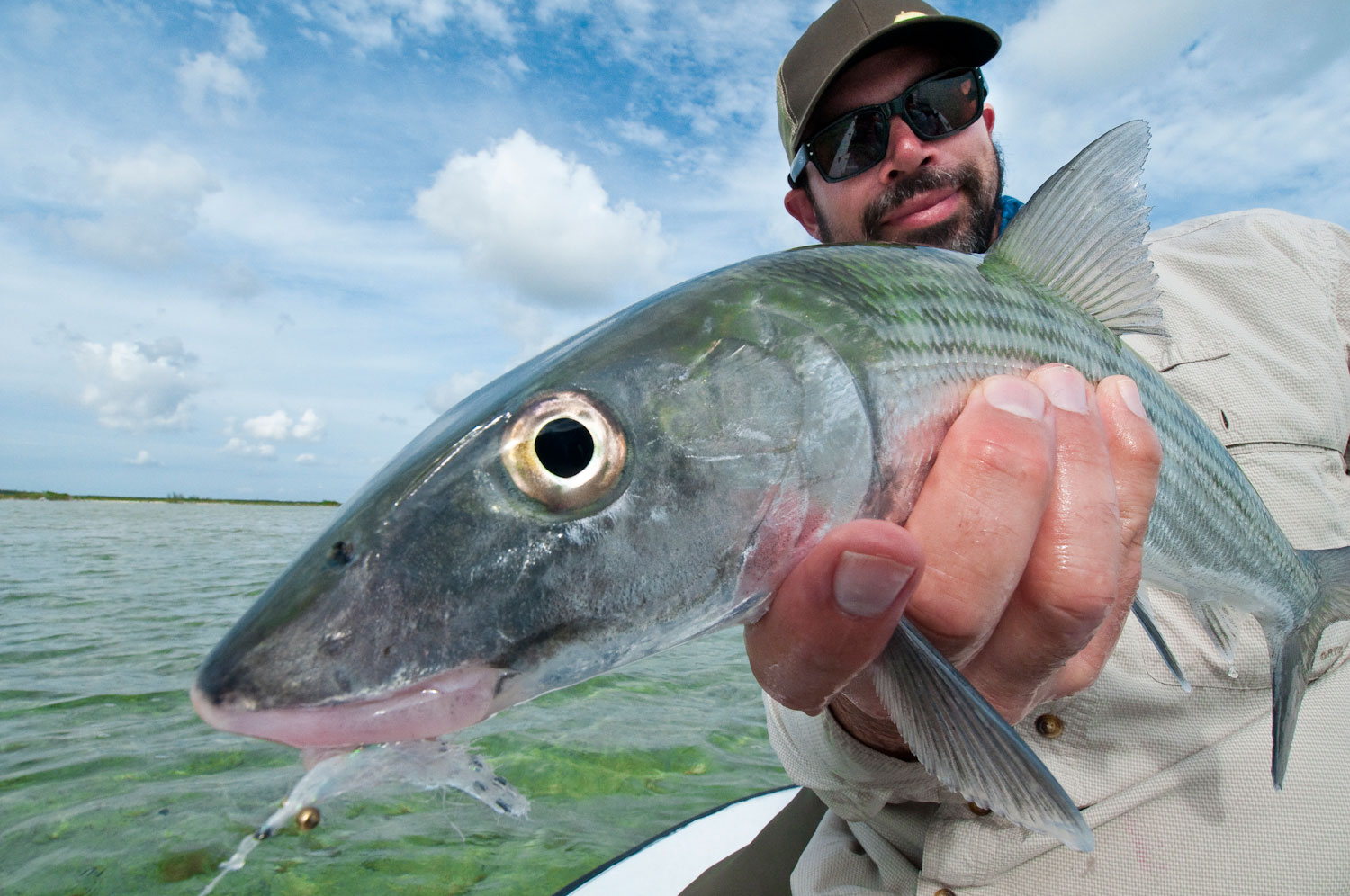
WE ALL KNOW THE HEARTBREAK OF SEEING A BIG FISH SPOOK AND RUN WHEN WE MAKE A CAST.
Whether its due to a poor presentation, the fish catching sight of us or something completely random and out of our control doesn’t matter. The pain is the same and it’s our natural reaction to consider that fish done and watch him swim away. For most species that’s the case, certainly for a wary trout but the bonefish is another subject.
Many times I’ve seen a bonefish spook and run or refuse a fly and turn away only to eat that same fly on the next cast. Maybe it sees the fly in a different light or from another angle that makes it more appealing or maybe it’s mood changes that quickly, I don’t know but it happens. What I do know is that as long as that fish is in range I will continue to show it that fly.
Read More »The Only Two Caddis Pupa Patterns I Really Need to Carry
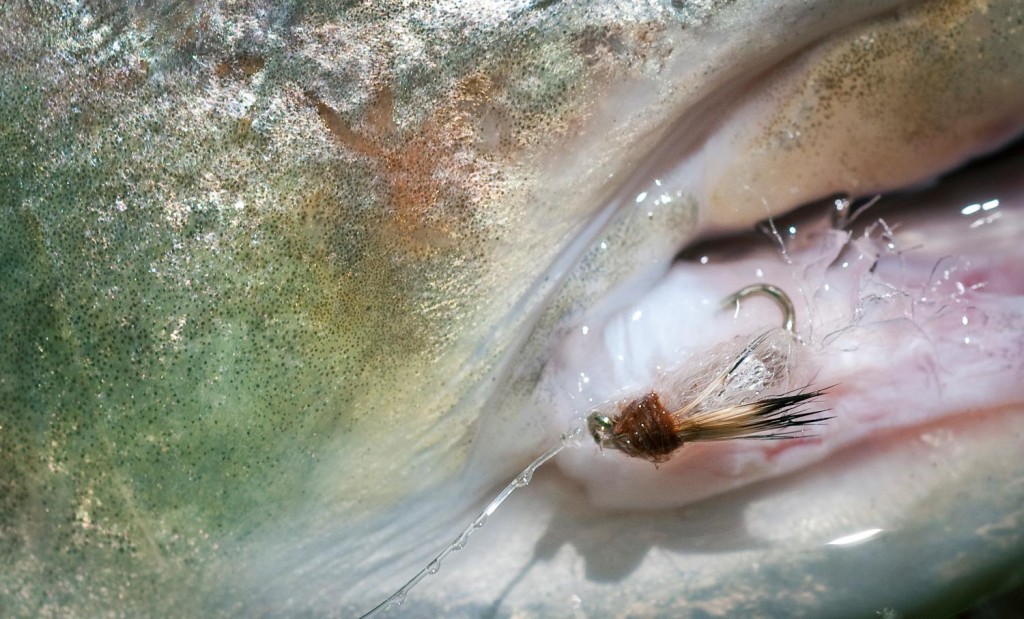
Caddisflies, who doesn’t love them? I can assure you trout sure do.
Tying a caddisfly imitation on, is usually not a bad move on any trout water you visit. Globally, there’s thousands of different species of caddisflies, and that fact alone, one could argue caddisflies are the most abundant and popular aquatic insects found in trout water. If I remember correctly, my first trout landed on a dry fly was with an Elk Hair Caddis. That was a long time ago, back when I knew nothing about fishing caddis pupa patterns and how important they were. I’ve since, with the help of the great Gary LaFontaine, author of the famous book, “Caddisflies”, deepened my knowledge of this aquatic insect, and I’ve built a whole new appreciation and respect for the importance they have in a trout’s diet. Year-round, but particularly during the spring, early summer and fall, fly anglers should be well stocked up on caddisfly pupa fly patterns.
It’s safe to say the most effective way to catch the trout during a caddisfly hatch is to fish caddis pupa imitations. I’ve got many different caddisfly pupa patterns in my fly box, but over the years, LaFontaine’s deep sparkle pupa and emergent sparkle pupa have caught me more fish than all the other pupa patterns combined. These patterns should be in every trout anglers fly box. Gary LaFontaine did an excellent job of researching and studying the characteristics, underwater look and behavior of emerging caddis pupa. He used aquariums with living caddisfly specimens, and spent countless hours scuba diving on rivers during caddisfly hatches to gain accurate insight of what the trout see during a caddisfly hatch. He then took the research and data he collected and hand picked fly tying materials that he could use to design and tie accurate caddisfly patterns for each life-stage of the aquatic insect. This was an astonishing feat that took Gary LaFonataine twenty years to compile and complete. We all owe him a great deal of gratitude and thanks for all his hard work. Without his contributions who knows where we’d be today in understanding
Read More »The Fish Of A Lifetime: Video
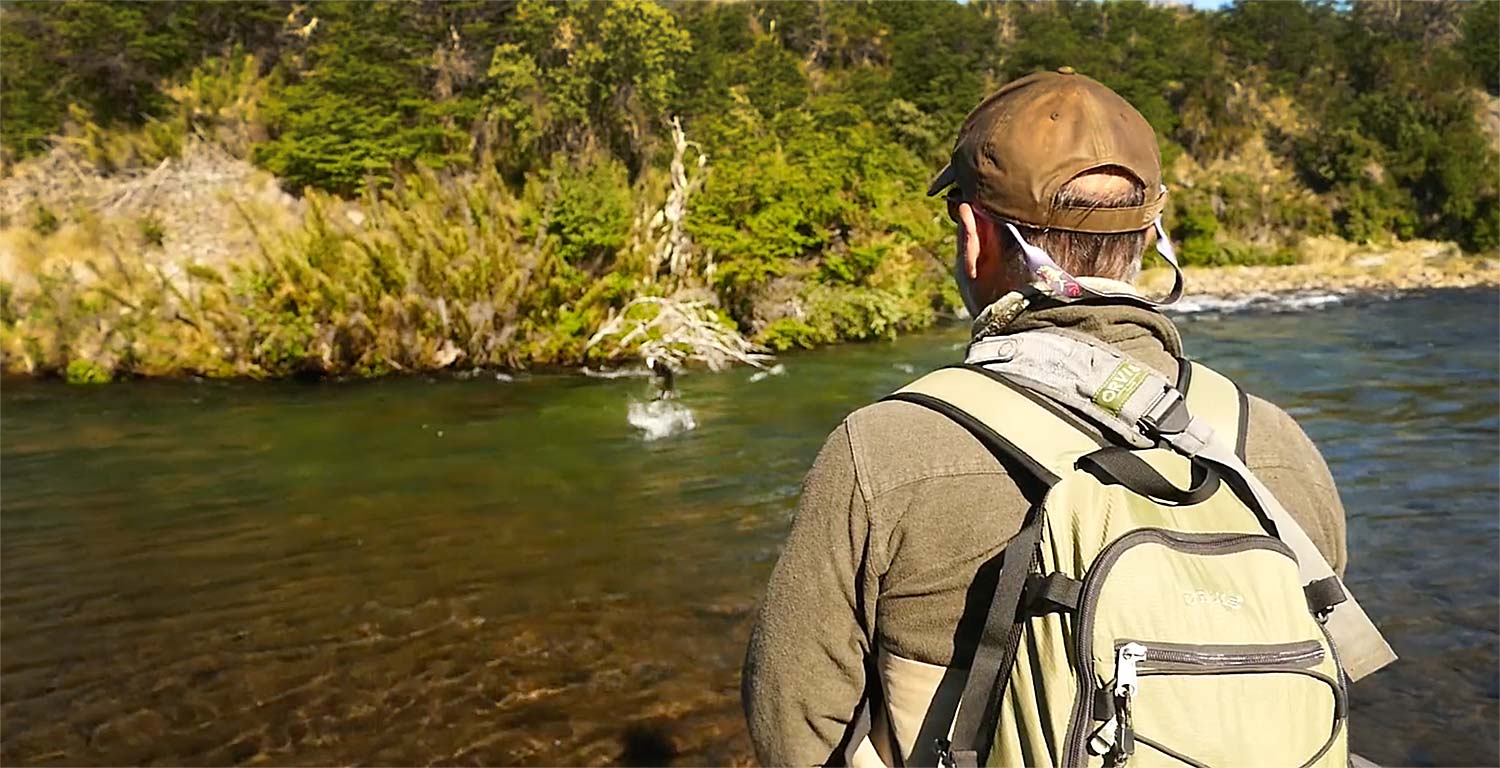
What happens when the fish of a lifetime refuses your fly three times?
If you are Jack Stephens, and you’ve spent half a century looking for a river no one has fished, and you’ve found it…you cast again. This is an amazing fishing story, and all caught on film. The kind of magic that only happens in Patagonia.
Read More »Louis’s Saltwater Casting Drill

There’s no debate, practicing your casting makes you a more effective angler.
But all practice is not created equal. Simply heading down to the park and hucking as much line as possible doesn’t accomplish much. A while back we published a practice routine recommended by Tim Rajeff. If you haven’t seen that video, you should check it out. Any angler can benefit from Tim’s practice plan.
Today I’m going to add my own casting drill. This is a saltwater specific drill that works on a couple of techniques commonly used in saltwater fly fishing. It simulates making three presentations to a moving fish and it requires several tasks at once.
I lay out 3 hula-hoops in a line. The first at 40 feet, the next at 60 feet and the last at 80 feet. If you can’t cast 80 feet just shorten the gaps and work with the cast you have. I then step to the side so the three rings appear as a diagonal line. Starting in my ready position, I cast to the first ring, then pick up the line and cast to the second ring, and then the third. I do all of this with no false casting.
Don’t stress out about hitting the center of the rings. Your accuracy will improve with practice. Work on making the presentations efficiently without false casting, by shooting your line to the target. Pick the line up slow and smooth so your fly will not make noise and spook the fish. Work on making the three casts as quickly and accurately as possible.
I like this drill because it teaches several techniques in a realistic fishing scenario. If you can hit those three targets quietly in 10 seconds or less you’re going to do well on the water. It’s easier than it sounds. Just stay focused and keep practicing.
For the gear-heads, I’m casting the new
Read More »Fixing A Twisted Fly Line In Seconds
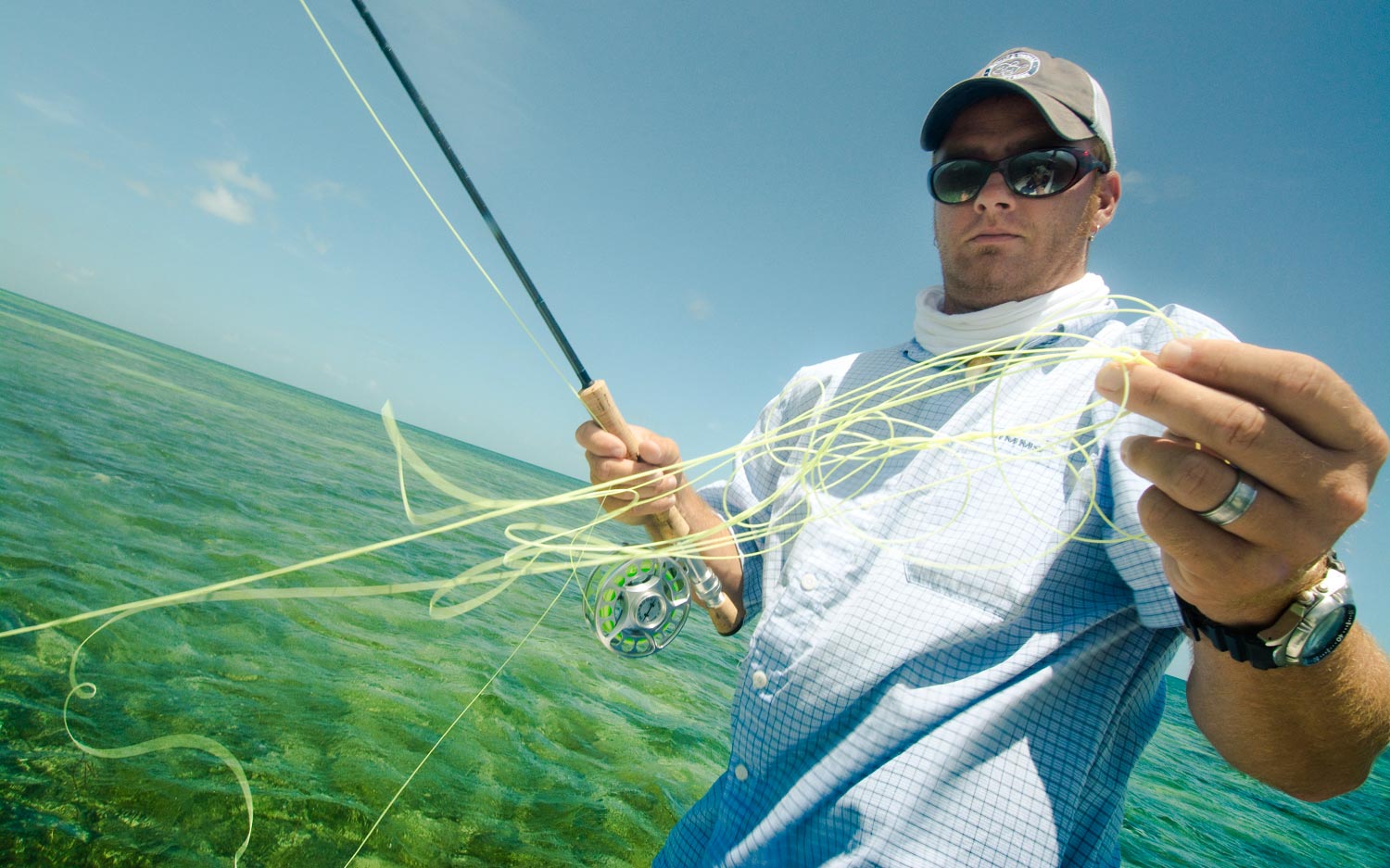
Every fly angler has experienced a wicked twist in their fly line causing it to tangle and knot at their feet.
It may be caused by a flawed casting stroke, a big fly twisting in the wind or it may be God punishing you for masturbating. Regardless of why it occurs, it’s frustrating at the least and heartbreaking at the worst. There’s nothing worse than taking a shot at the fish of a lifetime, only to have your cast cut short by a knot in your guides.
Fortunately, a twisted fly line is easy to fix. You don’t have to lose valuable fishing time, while stripping the entire line off the reel and towing it behind the boat or letting it hang in the current. You can fix that twist in seconds.
In this video, our good friend Zack Dalton from RIO Products shows you how.
Read More »Bends Are Like Best Friends
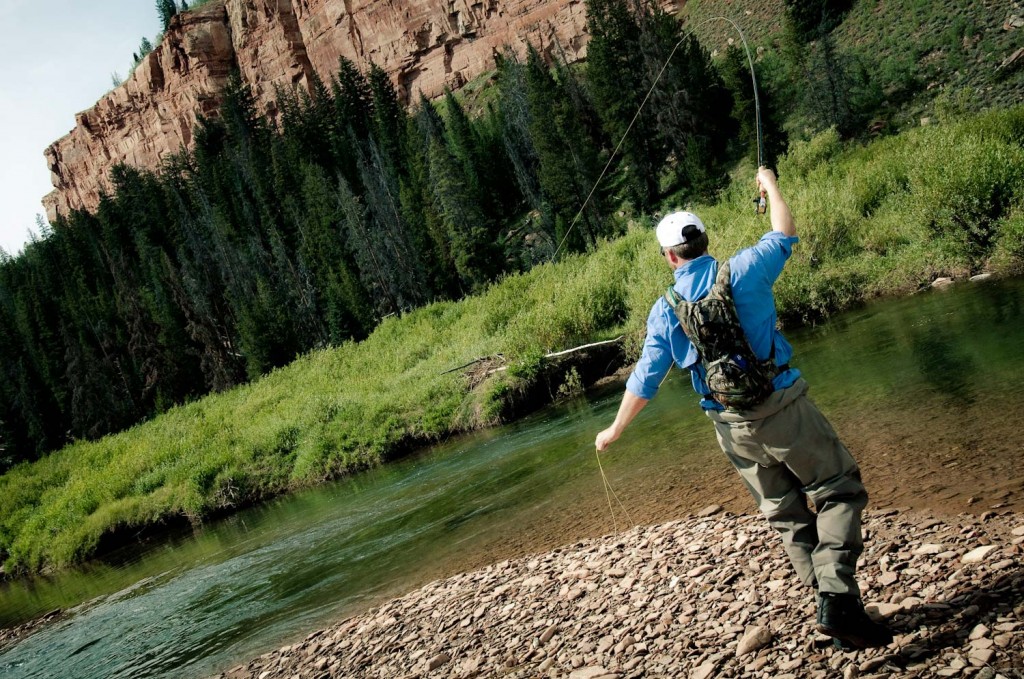
Bends in rivers and streams are like my best friends.
They possess all the qualities that I value and they always provide me consistent support in my endeavors. I don’t know about you, but when I find myself staring at a section of river or stream and I see a nice bend, I quite often head straight for it. I do this because I know it will usually produce a quality fish or two on the end of my line, and it’s generally very obvious to me where I should present my flies.
Just about every bend you encounter on the water will hold these three qualities.
1. One Well Defined Current
There usually will be one well defined current, collecting and moving food through the bend. This clearly indicates to anglers where the most food is drifting and where the fish should be positioned to intercept it.
2. Clear Channel or Trough
That well defined current usually has cut out a deep channel or trough in the bend. This reinforces further why fish will be located here. The deeper that fish can get below the surface and current, the less energy they’ll have to exert to maintain position and feed. The deeper water also provides
The Persistent Angler
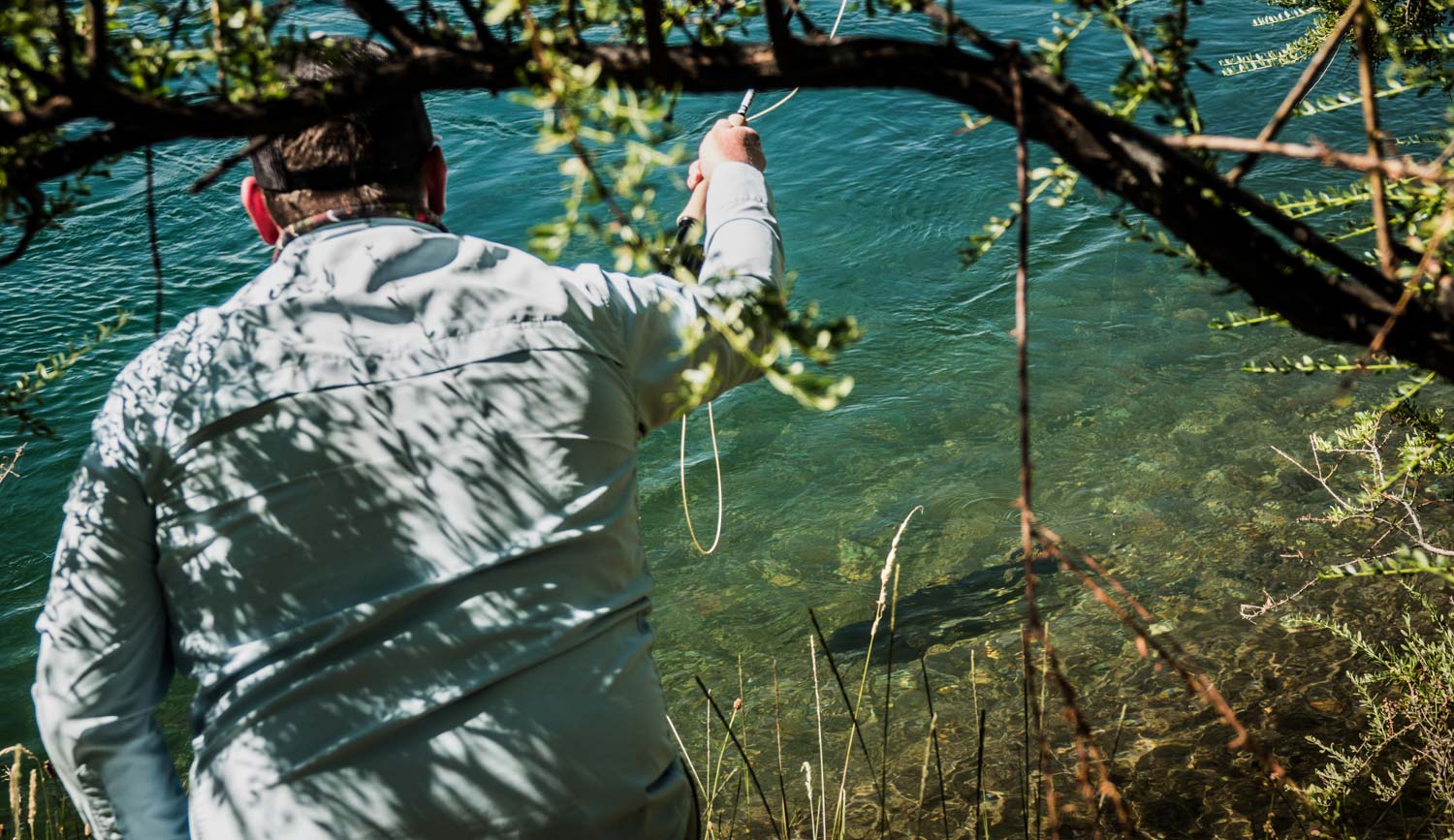
By Louis Cahill
Is there any point in continuing to pound a fish who just won’t eat?
The cool thing about fly fishing is that it offers such diversity. There is a species or a style of fishing every angler can enjoy. If you don’t like trout fishing, you may like bass or bonefish. If drifting dry flies isn’t your thing, stripping streamers may be. There is no wrong answer to the question, how should I fish? We all get something different out of fly fishing and, as long as you’re having fun and being respectful of the resources and your fellow angler, I say go for it!
Over the years, what I get from fly fishing has evolved, and it hasn’t evolved in the same way for every kind of fly fishing. I freely admit that, in some ways and for some fish, I’ve gotten lazy. I’m not proud of it but I don’t apologize for it either. Trout fishing specifically has become more of an excuse to hang out with my friends or my dog more than a goal oriented pursuit. I’m admittedly more interested in having fun than I am catching huge fish or a lot of fish. I guess that’s why I often find myself just as happy watching a buddy fish a run. I think it’s also why I’m perfectly happy walking away from a stubborn fish. The thing is, I admire anglers who don’t.
I’ve known a lot of anglers who really enjoy catching the uncatchable fish. A couple of them so focused they could care less about the other fish happily rising in a run and spend the bulk of the day butting heads with the stubborn fish who won’t eat.
The cool thing is that these guys, the really good ones, usually get that fish.
One of those anglers is Justin Pickett, no stranger to regular readers. Justin is one of those guys who almost always gets that problem fish to eat. I’ve watched him work a single fish for three hours. Like a sniper, dug in and waiting for a shot. When he gets locked in like that you may as well get comfortable. Have some lunch, take a nap, read a book, or just clip a walkie-talkie to his belt and go see the rest of the river. It’s going to take a minute.
You may think that’s cool or you may think it’s crazy but the results are hard to argue with. That fish he spent three hours on, while the rest of us had lunch, was a 32 inch brown trout and, yes, he landed it. There were four of us and no one thought that fish would eat, except Justin. I’ve never seen a more deserved fish.
The thing I think makes the case for persistence is
Read More »